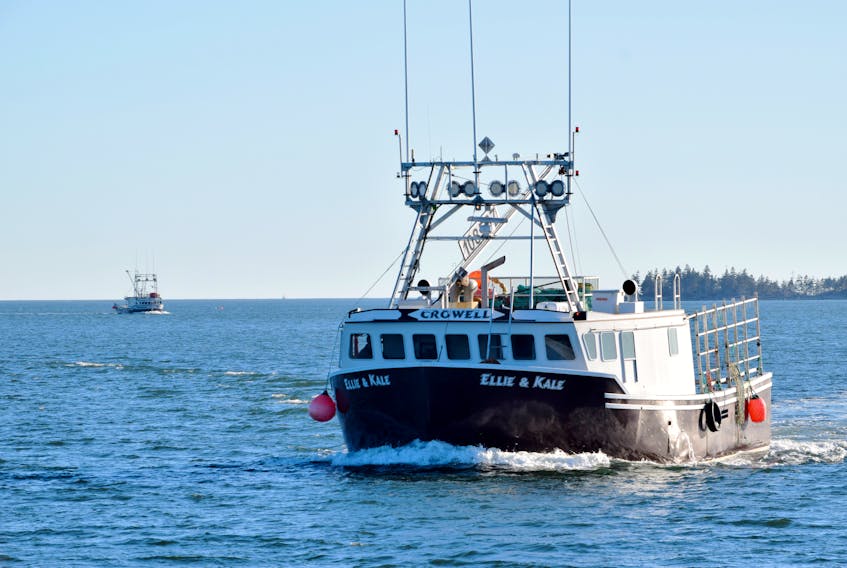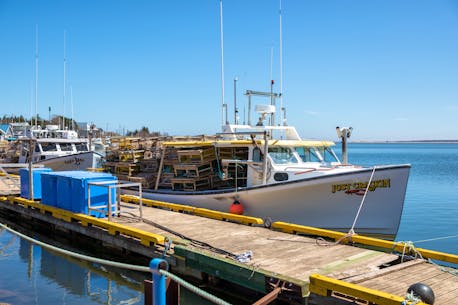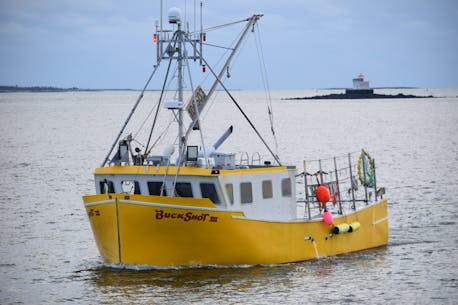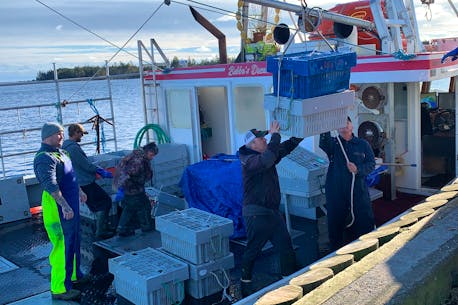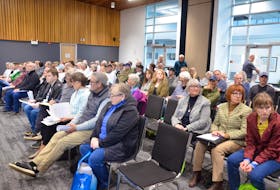Lobster licence holders in Atlantic Canada’s Lobster Fishing Areas (LFAs) have a lot to consider when it comes to whether or not they follow suit with their American counterparts and increase the minimum lobster carapace size effective Jan. 1, 2025.
Last fall, Maine Department of Marine Resources commissioner Patrick Keliher announced the lobster carapace size would be increasing in Lobster Conservation Management Area 1, which extends from the Massachusetts/New Hampshire border and follows the outer boundary of the territorial waters of New Hampshire and Maine to the U.S./Canada border.

The first increase on Jan. 1, 2025, will see the minimum carapace size increase by 1/16th of an inch to a size of 3 5/16th of an inch, or from 82.5 mm to 84 mm. A second increase scheduled for Jan. 1, 2027, will see the minimum carapace size increase by another 1/16th, or by two more millimetres to 86 mm.
The reason is a decline in juvenile lobster in Gulf of Maine surveys. The size increase was automatically triggered when juvenile indices reached a 35 per cent decline. The latest surveys showed a decline of 39 per cent.
Once the increase comes into effect, Canadian lobsters under 84 mm will be prohibited from entering the United States.
Tough decision
Sustainability, conservation, economics, and export markets are all factors that need to be considered by lobster harvesters when deciding what to do, says Heather Mulock, executive director of the Coldwater Lobster Association.
“From an economic point of view and export market point of view, 39 per cent of lobster goes to the U.S., so not a small amount,” she says.
“Are there other markets that can pick that up? Not the domestic market. Canada as a whole, as an industrialized nation, we eat very little seafood in general, including lobster. The idea we can sell this domestically is a flawed narrative for certain. To fill other export markets takes a lot of time, resources, and not something you can say: 'Jan. 1, we’re going to export 39 per cent to the European Union.' It doesn’t work that way,” Mulock says.
“Certainly, there are markets that will pick up that slack – China and other parts of Southeast Asia," she says. "The concern is always, will we get the shore price we need? With the increase in operational costs for LFA 34 we need to be in double digits for a shore price in order to break even. We have big loan payments, big boats.“

On the other side of the coin for consideration are sustainability and conservation.
With lobster landings declining 43 per cent in LFA 34 in southwestern Nova Scotia between the 2015-16 to 2022-23 seasons, “the mulit-million-dollar question” is whether there is a connection between the decline in juveniles in the U.S. and the lower landings in LFA 34, Mulock says.
"Are we seeing a significant decline in our recruitment that we should be concerned about? DFO science indicates LFA 34 (lobster stocks) are still in the healthy zone. However, we are on the cusp of that cautionary zone so that’s there for consideration as well,” says Mulock.
“We’ve heard from harvesters the last few years they are seeing a lot less juvenile lobsters but again it could be a trend, lobster predation, the cod coming back, potentially shifting currents. The Gulf of Maine current and Labrador current changing things up and could be changing the flow of the eggs in the water column so there are many factors to take into consideration,” Mulock says.
Impact on catches
According to a U.S measure increase LFA 34 information document that has been provided to port reps and their port clusters to review, the percentage of catch within LFA 34 that would fall between 82.5 mm and 84 mm is estimated at 12 to 15 per cent, based on best scientific information.
“It is important to note that 56 per cent of LFA 34 landings take place by Dec. 31 of the season, based on a 10-year average. If a measure increase to 84 mm was implemented on Jan. 1 it would affect approximately 44 per cent of the season’s catch," reads the information package.
"The increase to 84 mm on Jan. 1, 2025, then would only affect 12-15 percent of the remaining 44 per cent of landings for that season. The lobsters that would be returned to the water that spring would increase 13.5 per cent in weight and increase in carapace length 10-15 per cent to 90-95 mm during the molting process that summer and fall, meaning all those lobsters would be available to the commercial fishery the fall of 2025," it goes on to say, noting the same scenario would happen during the second size increase in January 2027.
Mulock says the U.S. information document was heavily vetted before distribution to fish harvesters in LFA 34.

"The information took several weeks to compile to ensure accuracy and is derived from various sources including the policy and economics division of DFO, DFO Science, the Nova Scotia Seafood Alliance, the Lobster Council of Canada, fishing associations throughout Southwest Nova, as well as anecdotal evidence from fish harvesters themselves,” Mulock says.
A similar information package has been prepared for LFA 33 harvesters.
“Discussions are still ongoing with port reps and the captains in LFA 33 about exactly how they’re going to roll out their decision,” says Dan Fleck, executive director of the Brazil Rock 33 34 Lobster Association.
“We have members in both LFAs. We did prepare an information document of what’s occurring in the United States and the potential for any situations in Canada. It is definitely a concern that the captains need to make a decision on. The ultimate decision will come down to DFO so they will do whatever they want when it comes down to it,” Fleck says.
“Brazil Rock is not campaigning for or against this. This is something that is up to the captains. Our only role is to bring as much information as we can so they can make an advised decision.”
Lobster Council meets
The U.S. size increases planned for 2025 and 2027 was the focus of a meeting held by the Lobster Council of Canada on April 9.
Executive director Geoff Irvine says all industry sectors were present including lobster harvesters from all four Atlantic provinces, buyers, live shippers, and processors from throughout the region, along with government officials.
“The impact of the increase is largely unknown until it takes place,” says Irvine. “We are speculating and trying to prepare, but there are so many factors out of our control that could be positive or negative as this evolves. It will take place over three years so the sector will adjust, as we always have.”
“How Canada responds to this measure increase will be up to the harvesters," reads the LFA 34 information document. "DFO does not have a ‘trigger mechanism’ in place to increase the legal lobster measurement size for sustainability. This decision will be up to licence holders.”

Mulock says other winter lobster fisheries in LFAs 33 to 38 (Southwest Nova, Bay of Fundy) are having discussions about the pending U.S. carapace size increase.
“Whether they have a vote, that will be up to them. But ultimately when you look at the downward trend in landings it's something that harvesters and port representatives have to have a full-throated discussion around this because it's in their best interest.”
Details are still being worked out on how the district-wide vote will be administered for LFA 34 licence holders. The aim is to have the vote either before the season closing on May 31 or shortly thereafter.
There are 979 lobster licence holders in LFA 34 and 678 lobster licence holders in LFA 33, which spans the province's south shore.
According to preliminary statistics from DFO for the 2022-2023 season, LFA 34 fishers landed 15,263 tonnes of lobster with a landed value of $305,416,405, a decrease of 4,379 tonnes in the catch and $143 million wharf side from the 2021-2022 season.
Bookmark our website and support our journalism: Don’t miss the news you need to know — add saltwire.com to your bookmarks and sign up for our newsletters here.

